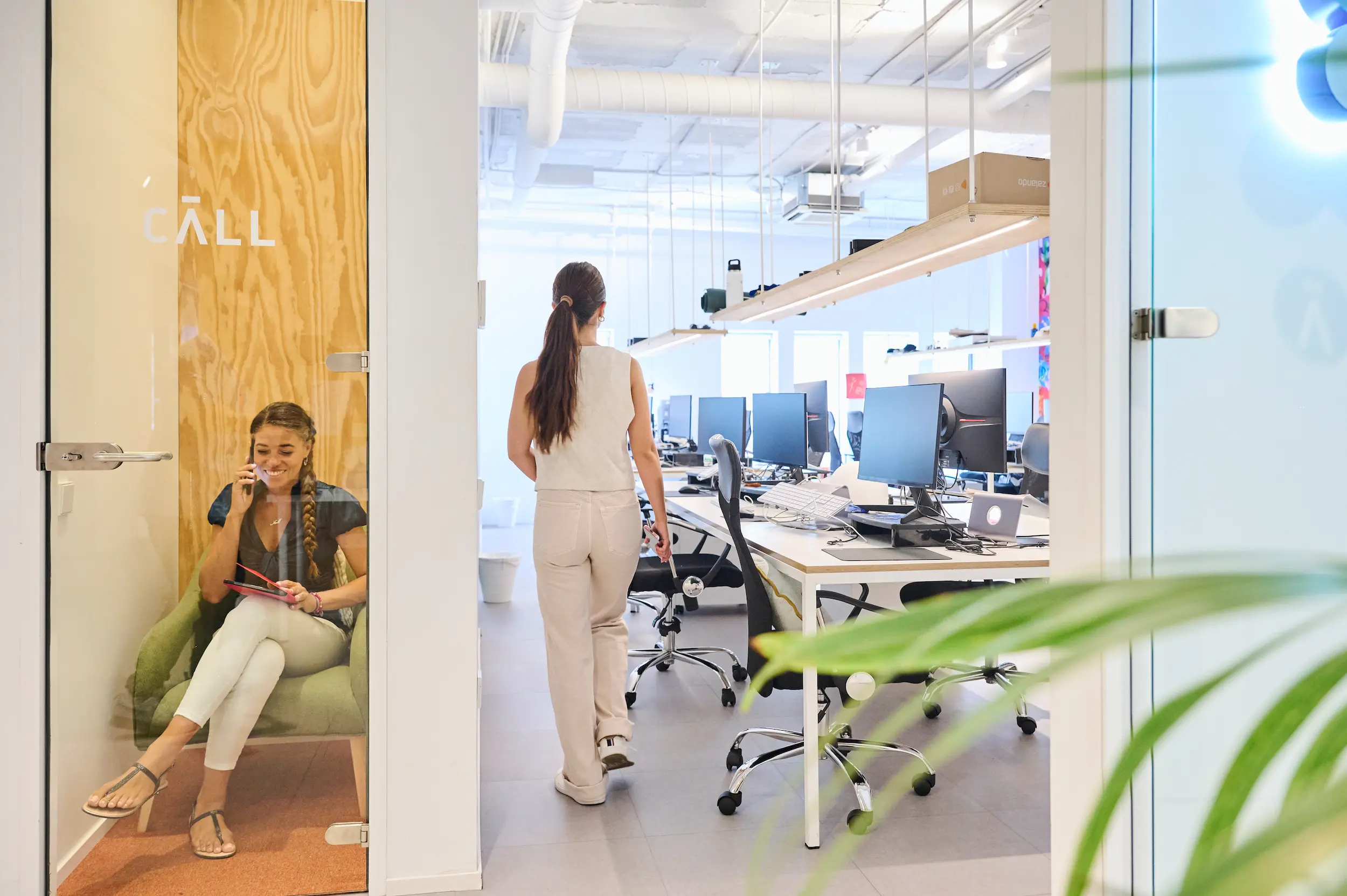The hybrid work model: a complete guide

For a long time, the office was the center of everything. Then came telecommuting, with its advantages and challenges. Now, the hybrid model has become the preferred option for both companies and workers. It's not a fad, it's a natural evolution. But what does it really mean to adopt this model? Is it as simple as allowing some days at home and others in the office?
Spoiler: no. But properly applied, it is a positive revolution.
What is the hybrid model (for real)?
Beyond the classic definition of "working part remote, part office", hybrid work is a way of understanding work that focuses on flexibility, autonomy and trust. There can be many ways to apply it: with fixed days in the office, with full freedom of choice or with rotating systems according to teams or functions. The important thing is not the percentage of attendance/remote, but the purpose: to create a system that works for people and for the company.
Advantages for the team: wellness at the center
Less travel, more health
Spending less time in traffic or on public transport translates into more hours to rest, move around, have a leisurely breakfast or even meditate. All this has a direct direct impact on physical and mental healthless stress, less muscle injuries, more energy.
Actual reconciliation
Being able to adapt the workday to one's personal rhythm (taking the children to school, taking care of a family member, going for a run before a meeting) does not mean working less, but living better. And when people live better, they work with more motivation.
Freedom and responsibility
The hybrid model shifts some control to the employee. This implies maturity and trust, but also reinforces autonomy and commitment. People feel in control of their time and performance, not under constant surveillance.
Benefits for the company: more than cost reduction
Higher productivity (when structure is in place)
Far from the myth of "loss of control," many companies have found that productivity improves when the hybrid model is well managed. The key is to measure results, not schedules.
Happier and more loyal talent
Today's talent values flexibility as much or more than salary. Offering a hybrid model is no longer an extra, it is a minimum to compete for qualified profiles. And it also helps to retain those who are already on the team.
More efficient spaces
Reducing presence does not mean doing without an office, but rather rethinking it: fewer fixed workstations, more collaborative spaces. Thus, the offices become meeting points and not places that "have to be filled" out of obligation.
The real challenges of the hybrid model
Not everything is freedom
Without good organization, flexibility can turn into chaos. If each person chooses when they do or don't go to the office, they may never coincide. That can weaken team cohesion and company culture.
Solution: establish clear frameworks (e.g., "all office Wednesdays" or "minimum 2 days per week in person").
Digital disconnection at risk
When work goes with you, it's easy not to disconnect. Many employees end up working longer hours without realizing it. The hybrid model needs clear rules of disconnection and a culture that respects them.
Solution: set schedules, encourage breaks, normalize rest.
Labor invisibility
When there are mixed teams (on-site and remote), there can be a difference in visibility. Whoever is more physically present may end up being more considered for promotions, decisions or recognition.
Solution: encourage equitable hybrid meetings, make decisions based on objective criteria and rotate visible leadership.
What does the law in Spain say about hybrid work?
In Spain, hybrid work is regulated within the legal framework of telecommuting. Here are some key points to keep in mind:
-
Written agreement: if a person works more than 30% of his/her working day from home (approximately 1.5 days per week), there must be a formalized telework agreement.
-
Equal rights: the hybrid worker has the same rights as an on-site worker: salary, training, opportunities, protection.
-
Equipment and expenses: the company must provide the necessary means (computer, connection, etc.) and assume or compensate the expenses derived from remote work.
-
Risk prevention: the conditions of the workspace at home or outside the office must also be assessed and its safety ensured.
-
Digital disconnection: it is recognized as a legal right, and the company must guarantee its compliance.
This framework is evolving, so it is advisable to always check for legal updates or seek advice before implementing internal policies.
How to implement a hybrid model that works
It is not a matter of improvising, but of designing a conscious model. Here are some practical tips:
-
Define the rules of the game: how many days from home? who decides? how do you coordinate teams?
-
Strengthens culture and communication: more flexibility requires more clarity in values, objectives and processes.
-
Redesign spaces: think of offices as centers for meeting, collaboration and culture, not just workstations.
-
Invest in technology: make sure that everyone can work on equal terms from any location.
-
Train leaders and teams: leading in hybrid is not the same as leading in face-to-face. You need empathy, structure and digital skills.
Coworking and hybrid work
Coworking or flexible work spaces are a very good option for companies that want to operate with hybrid work models.
At Aticco many coworkers already work in hybrid models and our spaces either as their main workplace or for one-off meetings. The future of work is going to move more and more towards these hybrid models and flexible workspaces are an important player in this scenario.
👉 You may be interested in this article: 8 benefits of working in a coworking space
Success story of the hybrid model
In recent years, large companies have adopted this trend. This is the case of the DAS Group, which, after conducting a pilot test, has decided to fully implement the hybrid model. Currently, DAS Seguros workers can work 50% of their time remotely and 50% in the office.
In statements to the Europa Press agency, the company stated that hybrid work: "has led to an increase in the efficiency and autonomy of teams", positively impacting "the company's business results in recent years".
In addition, the DAS group is a user of the Aticco Workspaces coworking spaces, where it organizes some of its events and round tables on the legal sector through hybrid events.


